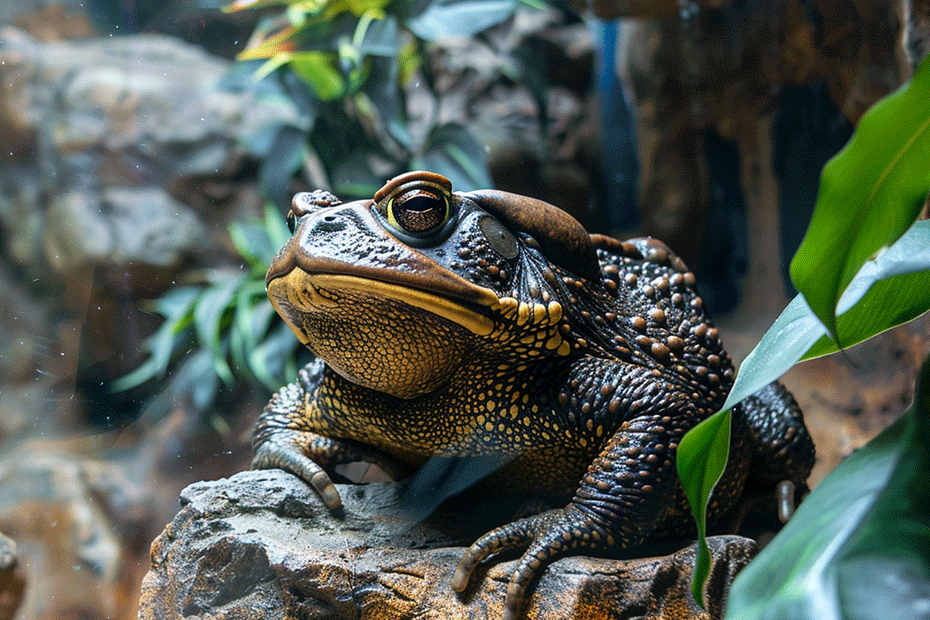Are you curious about when toads emerge from their winter slumber? Understanding when toads come out of hibernation is essential for nature enthusiasts and researchers alike. In this text, we’ll investigate into the intriguing area of toad hibernation and reveal the signs that indicate their awakening.
As the temperatures begin to rise and the days grow longer, toads start stirring from their deep winter sleep. The emergence of toads from hibernation is a natural phenomenon that signals the arrival of spring. Keep reading to discover the factors that influence when toads resurface and how you can witness this remarkable event in nature.
Join us as we explore the intricate process of toad hibernation and the magical moment when these amphibians emerge from their winter hideouts. Stay tuned to learn more about the captivating world of toads and their seasonal rhythms.
Key Takeaways
- Toads emerge from hibernation as temperatures rise and days grow longer, signaling the arrival of spring.
- Hibernation is crucial for toads to survive extreme conditions by reducing their metabolic rate.
- Factors like temperature and day length influence when toads come out of hibernation.
- Signs of toads emerging from hibernation include increased activity, vocalization, exploration, improved appetite, and visible presence.
Overview of Toad Hibernation

Hibernation is a crucial survival strategy for toads, aiding them in enduring harsh environmental conditions. Here is an overview of their fascinating hibernation process:
- Definition: Hibernation is a state of minimal activity and metabolic depression, enabling toads to conserve energy during unfavorable conditions.
- Importance: Toads enter hibernation to escape extreme cold or drought, ensuring their survival until more favorable conditions return.
Factors Influencing Toad Hibernation
Several key factors influence when toads emerge from hibernation:
- Temperature: Warmer temperatures signal toads that it’s time to wake up and resume their active life cycle.
- Day Length: Changes in daylight duration play a significant role in signaling toads when to end their hibernation period.
Process of Toad Hibernation
Toads prepare for hibernation by finding suitable shelter, such as burrows or logs. During hibernation, they exhibit the following behavior:
- Metabolic Slowdown: Toads reduce their metabolic rate significantly, conserving energy while inactive.
- Limited Movement: Toads remain relatively immobile during hibernation, conserving vital resources.
Summary
Understanding the intricacies of toad hibernation offers insight into the remarkable adaptations these amphibians possess. Stay tuned to discover more about the seasonal rhythms and behaviors of toads in their natural habitats.
Factors Influencing Toad Hibernation Patterns

Temperature
- Toads hibernate due to dropping temperatures.
- They enter hibernation when temperatures become too cold.
- Cooler temperatures signal the need to hibernate.
- Warmer temperatures prompt emergence.
- Shorter days also influence toad hibernation.
- Decreased daylight triggers their hibernation.
- Longer days indicate end of hibernation.
- Day length change is a key cue for toads.
Understanding how Temperature and Day Length impact toad hibernation is crucial for their survival strategies.
Signs of Toads Emerging from Hibernation

When toads start emerging from hibernation, there are certain signs to watch out for:
- Increased activity: You’ll notice a surge in movement as toads become more active after their period of hibernation.
- Vocalization: Male toads especially may begin their distinctive calls to attract mates during this time.
- Exploration: Toads will start exploring their surroundings, seeking out food sources and suitable habitats.
- Improved appetite: With the return to activity, toads will show an increased appetite as they replenish their energy stores.
- Visible presence: You’re more likely to encounter toads out in the open as they emerge from their hibernation spots.
Understanding these key signs can help you identify when toads are coming out of hibernation and observe their behaviors closely.
Conclusion
Understanding the factors that influence toad hibernation patterns, such as temperature and day length, is crucial for recognizing when toads come out of hibernation. By observing signs like increased activity, vocalization, exploration, improved appetite, and heightened visibility, you can identify when toads are emerging from their winter slumber. Being aware of these indicators allows you to appreciate the natural rhythms of these fascinating creatures and witness their behaviors firsthand. Stay attuned to the changing seasons and keep an eye out for these telltale signs to catch a glimpse of toads as they awaken from hibernation.

Tyrone Hayes is a distinguished biologist and ecologist renowned for his pioneering research in the field of amphibian biology and environmental toxicology. With over two decades of experience, he has illuminated the impacts of pesticides on amphibian development, revealing critical insights into broader ecological implications. Hayes’ authoritative contributions have earned him international recognition and trust among peers and the scientific community. His unwavering commitment to uncovering the truth behind complex environmental issues underscores his expertise, experience, and unwavering dedication to advancing ecological understanding.
